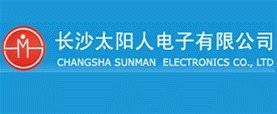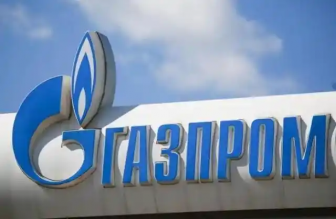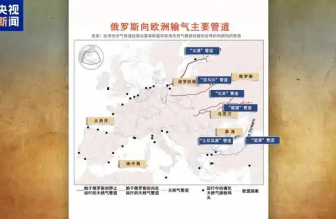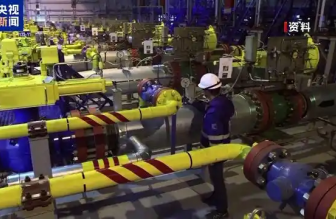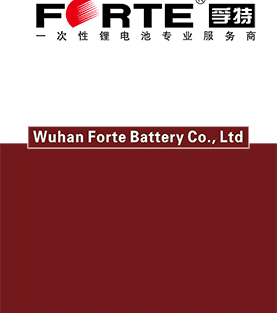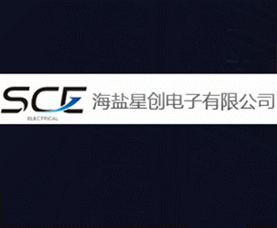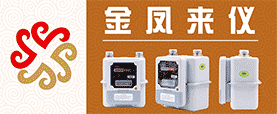本文根据澳洲水务集团Rian Sullings先生发表在领英上的文章节选翻译而成,原文题目:Top 5 Smart Water Metering Predictions for 2018。
作者简介
Rian Sullings先生是澳大利亚智能计量专家。在智能水表领域,他帮助用户了解公用事业水资源的使用情况以提高他们用水效率,主要关注使用最新的物联网技术确保智能水表项目达标,提高用水效率和持续供水,降低成本。
在2017年6月无锡的中国国际表计行业年度大会上,Rian Sullings先生作了精彩的演讲,给参会人员打开了一扇了解澳洲市场的窗户。
今年4月,在珠海2018中国国际表计行业年度大会上,我们依然邀请到Rian Sullings先生就澳洲水务市场布局做精彩的演讲。

2017年6月,Rian Sullings先生在中国国际表计行业年度大会做演讲
这篇文章是我对2018年智能水表市场的五条预言。在2017年的基础上,今年智能水表将继续快速发展,迈上新台阶,并且将会出现新的解决方案。虽然这些预测主要关注的是澳大利亚和亚太地区,但是放在全球市场也同样适用。以下内容是我对2018年的预测,排名不分先后。
LPWAN的部署将增加不止10倍
如果2018年智能水表计量技术方面只有一种技术值得书写,那就是低功耗广域网(LPWAN)。 LPWAN是具有远距离、低功耗和低成本的无线网络。2017年,这些低功耗广域网(LPWAN)的覆盖范围呈指数增长,并将在2018年进一步增长。
全球受捧的LPWAN技术已经进入智能水表计量领域,作为现有的单一供应商网络的替代方案,其中的无线网络、设备以及通常的头端系统由具有专有技术的单个供应商提供。这会造成供应商锁定的问题。作为智能水表计量项目的一部分,单一供应商网络通常要求运营商部署专用无线网络。全球性的LPWAN拥有一个强大的生态系统,包含了设备、软件供应商以及多个网络运营商等,并将推出更多的物联网应用案例和项目,比如智能路灯、停车传感器以及其他几乎所有“智能”或“连接”的其他物理设备。
Sigfox
Sigfox自2009年以来一直在构建自己的网络,并且一直是LPWAN领域的先行者。 Sigfox正在努力达成自己到2018年年底的目标 - 在60个国家开展业务。截至2018年1月,该公司已经在36个国家为7.27亿人提供了Sigfox网络服务。
2018年1月9日,在中国国家主席习近平和法国总统Emmanuel Macron的见证下,Sigfox与中国一家老年护理技术提供商签署了合作协议,为该公司提供技术支持。这个消息是一个重要的里程碑,标志着Sigfox技术在世界最大的物联网(IoT)市场之一的中国进入了扩张期。
在澳大利亚,联邦政府承诺为当地的Sigfox运营商Thinxtra公司提供1000万美元的资金支持,这将有助于完成到2018年年底覆盖95%人口的目标(目前约为75%)。
NB-IoT
窄带物联网(NB-IoT)是由像Telstra,Vodafone和Optus公司等蜂窝通信运营商运营的低功耗无线网络,可以将其视为与3G网络类似,只是传输范围更广,渗透率更强,功耗也更低。
自2016年以来,沃达丰(英国电信企业)一直为维多利亚州包括智能水表计量等项目的部署和测试提供技术支持。2017年,沃达丰的业务范围扩大到了墨尔本中央商务区和悉尼市,预计今年沃达丰将在澳大利亚全国部署。
随着澳洲电讯Telstra宣布NB-IoT已覆盖了澳大利亚所有的主要城市,很显然NB-IoT技术将成为物联网技术的领导者,包括在智能水表领域。通过这一举措, Telstra迅速赶上了那些先行者,尽管目前覆盖范围的具体细节尚未透露,但预计Telstra的NB-IoT网络将成为澳大利亚最大的专用低功耗网络。
Optus公司也一直在悄然发展他们的网络,并致力于更智能的水表项目。2018年可能会看到Optus就NB-IoT计划发布更多公告。
2017年年底,WaterGroup发布了第一台澳大利亚标准的数字水表,该水表集成了NB-IoT通信技术(Sigfox和LoRaWAN技术的水表也计划于今年发布)。2018年,澳大利亚的公用事业部门将努力部署这种新一代的水表。
LoRaWAN
LoRaWAN是LPWAN其中的一种标准,为所有感兴趣的玩家提供了一个框架,玩家可通过全球电信运营商来构建和定制他们自己的网络。
包括NNNCo,Meshed和GeoWAN在内的澳大利亚LoRaWAN网络提供商正在全国范围内拓展其网络,并将水务公司视为关键市场。2018年将看到在澳大利亚智能水表计量市场使用LoRaWAN技术的首批高端项目公告。
新西兰领先的电信服务提供商Spark宣布了2017年LoRaWAN网络在全国的部署,到2018年中期,LoRaWAN网络将覆盖70%的人口。这将促进远程监控应用的发展,并将推动2018年智能水表计量的部署。
区块链技术进入智能水表计量
区块链是这样一种技术,其中诸如金融交易之类的信息被输入并在分布式账本中维护。这意味着,不只有一方验证事件并将记录存储在中央单元,而是这些事件由多方共同确认和记录。区块链使用密码来确保记录不被恶意更改,保证了这是一个高度安全的信息存储和传输系统。
区块链和加密数字货币是独立的技术,这一点很重要。并不是所有的区块链应用都是加密数字货币,并不是所有的加密数字货币都建立在区块链技术上。
随着加密电子货币市场在2017年的大规模爆发,比特币价格攀升至1.96万美元,区块链科技受益于市场关注,其价值被大众迅速熟悉和认可。
澳大利亚能源公司Power Ledger运用区块链及加密电子货币使P2P贸易成为可能,并得力于2017年政府所支持的弗里曼特尔800万美元的项目。另一个组织IOTA(尽管没有直接使用区块链技术)提供了去中心化交易网,为物联网应用提供了加密电子货币解决方案。IOTA在1月18日持有市场资本约100亿美元,足以显示其对这个市场的兴趣。这些新技术为物联网系统提供了一种安全有效的方式使系统能够自动完成交易。设想一个气象站自动向感兴趣的第三方出售数据,并且将受益返回至所有者。
智能水表提供的数据吸引多方投资者例如公共事业单位、保险业、设备维护商、基础设施运营者以及政府机构等。这使得他们成为区块链技术应用的潜在平台,特别是那些瞄准物联网应用的行业。

如下是Rian Sullings先生的英文原文,英语好的小伙伴请自行食用~
Top5 Smart Water Metering Predictions for 2018
This article is my top 5predictions for smart water metering in 2018. This year smart water meteringwill continue to build on the achievements of 2017 and take them to new levels,and new solutions will start to emerge. While these predictions are presentedwith a particular focus on Australia and the Asia-Pacific region, they will allapply globally. Listed below in no particular order are my predictions for2018.
Deployments using globalLPWANs will increase >10x
2018 will be, if only onething for smart water metering in terms of technology, the year of the LowPower Wide Area Networks (LPWAN). LPWANs are wireless networks with long range,low power requirements, and low costs. The coverage of these networks has grownexponentially throughout 2017 and will ramp up further in 2018.
Globally adopted LPWANtechnologies have entered the smart water metering space as an alternative tothe incumbent single vendor networks where the wireless network, devices, andoften the head-end systems are offered by a single vendor with proprietarytechnology and limited or no interoperability. This creates vendor lock-in andscaling issues. Single-vendor networks typically require the operator to deploya dedicated wireless network as part of a smart water metering project.Globally adopted LPWANs have large ecosystems of device and software vendors,multiple network operators, and are rolled out to address far more IoT usecases and projects than smart water metering such as smart streetlights,parking sensors, and practically any other physical device that you can prefacewith the words ‘smart’ or ‘connected’.
Sigfox
Sigfox has been building outits network since 2009 and has been an early mover into the LPWAN space. Sigfoxis tracking towards a target of operating in 60 countries by the end of 2018.As of January 2018, this stands at 36 countries with 727 million people livingwithin a Sigfox coverage area.
On the 9th of January ’18Sigfox signed an agreement to provide their technology in China under apartnership with a local aged care technology provider in the presence ofChinese and French Presidents Xi Jinping and Emmanuel Macron. This newsrepresents a major milestone in the expansion of the Sigfox technology into oneof the largest markets in the world for the Internet of Things (IoT).
In Australia, the local SigfoxOperator; Thinxtra has been backed by the federal government through the CEFCwith a $10 million commitment. This will contribute to the target of covering95% of the population by the end of 2018 (currently around 75%).
NB-IoT
Narrow Band IoT (NB-IoT) is alow power wireless network operated by cellular telecommunication providerssuch as Telstra, Vodafone, and Optus. You can think of it as similar to the 3Gnetwork, only trading the transfer speeds for improved range, penetration, andlower power consumption.
Vodafone have been providingcoverage for pilots and tests in Victoria, including smart water meteringprojects, since 2016. Through 2017 coverage was expanded across the MelbourneCBD and Sydney. It is expected that Vodafone announce a nationwide deploymentin Australia this year. Vodafone New Zealand
With Telstra’s announcement ofNB-IoT coverage going live in all major cities in Australia, it is clear thatNB-IoT is going to be a leader in IoT connectivity including smart watermetering. With this move, Telstra has rapidly caught up to the earlier moversand while specific details of the current coverage have not yet been shared, itis expected that the Telstra’s NB-IoT network will be the largest dedicated lowpower network in the country by area of coverage.
Optus has also been quietlydeveloping their network and working towards more smart water meter projects.2018 will likely see Optus making more public announcements about its plans forNB-IoT.
In late 2017 WaterGroupreleased the first Australian Standard Digital Water Meter with integratedNB-IoT communications (Sigfox and LoRaWAN are also scheduled for release thisyear). Utilities nationwide are working to deploy this next-generation meterinto their networks in 2018.
LoRaWAN
LoRaWAN is a standard forLPWAN, providing a framework for anyone from hobbyists and home-gamers throughto global telecommunication providers to build and customise their own network.
Australian LoRaWAN networkproviders including NNNCo, Meshed, and GeoWAN are all expanding theirnetworks across the country and consider water utilities to be a key marketvertical. 2018 will see the announcement of the first high profile pilots usingLoRaWAN for smart water metering in Australia.
New Zealand’s leadingtelecommunication provider Spark announced thedeployment of a national LoRaWAN network in 2017 and that bymid-2018, 70% of the populationwill be covered. This is gaining traction for remote monitoring applications and willenable pilots of smart water metering in 2018.
Blockchain Technologiesto Enter Smart Water Metering
Blockchain is a technologywhere information, such as a financial transaction, are entered into andmaintained within a distributed ledger. This means that rather than only oneparty validating events and storing the records in a central location, these eventsare validated and recorded by multiple parties working together. Theseblockchains use cryptography to ensure that records aren’t maliciously altered.The result is a highly secure system for storing and transferring information.
If you haven’t heard ofblockchain or don’t understand its applications, watch this 2 minute video fora high-level overview. It is important to note that blockchain andcryptocurrencies are separate technologies. Not all use cases of blockchain arecryptocurrencies, and not all cryptocurrencies are built on blockchains.
Withthe cryptocurrency market gaining more headlines in 2017 through events such asthe Bitcoin price reaching over US$19,600, the underlying blockchaintechnologies are benefiting from the attention and rapidly gaining a widerunderstanding of their potential.
Australianenergy technology company Power Ledger is using blockchainand cryptocurrency to enable peer-to-peer energy trading and benefitted fromgovernment support towards an $8M project with the City ofFremantle in 2017. Anotherorganisation;IOTA (although nottechnically using blockchain) offers a decentralised transaction network,dubbed the tangle, and a cryptocurrencysolution for IoT applications. IOTA had a market capitalisation of over US$10billion in early January ’18 which gives some indication of the level ofinterest in the market. These new technologies offer a secure and efficient wayfor IoT systems to autonomously execute transactions. Think of a weather stationautomatically selling its data to interested 3rd parties with revenue feedingback to the owner.
Smartwater meters provide data that is of interest for multiple parties; utilities,home owners, insurance companies, maintenance providers, facility managers,government organisations, research foundations, etc., and are also used forbilling purposes. This makes them an interesting platform on which to applyblockchain technologies, especially those aimed at IoT applications.
Low Power Satellite Communications Will Debut in Pilots
Similarlyto LPWANs, low power satellite communications offer a way for smart watermeters and other IoT devices to transmit small packets of data with minimalpower consumption. They promise to be incredibly useful in remote areas whereother coverage options don’t exist, or aren’t economically or technicallyachievable. With vast farming land, mining operations, and communities livingin remote areas, many of which operating on limited water supplies, Australiaand other countries around the world have significant assets beyond the reachof the cellular networks.
Myriota and Fleetspace are working to bring satellitecommunications to IoT, both of which are launching new nano-satellites thisyear. These nano-satellites are roughly the size of a basketball and actas wireless network gateways providing connectivity from low Earth orbit. IoTdevices will be able to send small packets of data from anywhere in the worldto a network of tiny satellites.
A critical performancecriteria for remote monitoring systems is long range wireless communications.Satellite communications offer absolute maximum range, limited only by theconfines of the planet and unlock the potential of IoT for practically anywhereon Earth with a view of the sky.
While they may not be asefficient in densely populated areas as terrestrial LPWAN networks, they willbe the only viable option for huge areas of land. For example, while Telstra’swireless networks cover 99% of the Australian population, they only coveraround 1/3 of the geographic area of the country. Most LPWAN gateways rely onEthernet or 3G/4G for backhauling data so while you can add your own LPWANgateways anywhere you like, they must be connected to the internet in one wayor another which presents challenges in some remote areas. Direct device tosatellite systems do not have this issue.
Expect to see pilots for lowpower satellite smart water metering to begin during 2018.
Interoperability andStandardisation Continue to Improve
One of the biggest challengesin solution design and executing of IoT projects is interoperability. Smartwater metering solutions use a wide range of communication methods, protocols,data formats, file formats, etc. This means many devices and systems are notcompatible, at least not without development work to translate and convertmessages into the required formats.
While there are many detailedstandards for water meters in terms of metrology, physical properties, andmaterials, there is currently very little in the way of standardisation of thedata they send and how it is sent. This is in part due to the history ofsingle-vendor solutions where each meter or wireless network vendor has definedthe data type and delivery methods as they prefer (often to suit their ownsoftware), and not necessarily what is best for interoperability with othersystems.
The current norm is toundertake custom once-off development work on either the source of the data, orthe receiving systems to achieve interoperability. This is work often solvesthe issue for one project, but is not carried over to the next.
Softwareplatforms such as Reekoh help to streamline integration and make once-offinterfacing components reusable for multiple projects and systems. This isachieved through an ever increasing library of plug-ins, gateways, andconverter tools.
Utilitiesin Australia are responding to the challenge by collaborating with each otherand with vendors to standardise on globally adopted LPWAN networks supportingmultiple vendors and common application protocols. Utilities will adopt morestandardised LPWAN networks and begin to announce convergence on application protocolsin 2018.
Digital Utilities, IoT, and Smart Cities Initiatives DriveIncreased Adoption
Thebusiness cases for smart water metering are constantly maturing towards wideradoption and more projects are moving beyond the pilot stage to scaledroll-outs. This is being accelerated in part by a strong focus on a key themepromoted by the current Australian government; innovation. We are seeing anincrease in specialised individuals and working groups tasked with acceleratingthe successful adoption of new technologies to solve real problems withingovernment and utilities.
Thesegroups are focused on developing strategies and roadmaps to foster DigitalUtilities, IoT, and Smart Cities through to proof of concepts and trials andhave helped many organisations to start exploring the potential of smart watermetering and to reach the point of deploying these technologies in the field.
During2017 the Australian Government’s Smart Cities and SuburbsProgram was opened to release$50M in grant funding aimed at government organisations such as councils. Round1 has been awarded and enabled IoT and digital utilities projects. The initialprogram indicated that future rounds are a possibility. In addition to federalinitiatives such as this, the majority of the largest water utilities inAustralia have dedicated budgets for innovation and a need to act. Smart watermetering is one of the top priorities, especially now that LPWAN and othertechnologies are removing barriers to entry.
Governmentorganisations and utilities will continue to fund and drive new pilots andprojects throughout 2018. This will lead to an increase in all types of smartwater metering projects where a real ROI and benefit to the community can beachieved.
Althoughthis article is kept to list of my top 5 predictions for 2018 and thereforwon’t cover every development for the coming year, some others deserve amention. One example is artificial intelligence and machine learning. Thesetechnologies will continue to improve and more projects will commencethroughout this year. AI and ML will ramp up even further once largerquantities of projects and next generation meters are deployed and may start toshow their true potential and reach the top of the list in 2019.
What are your predictions for smart watermetering in 2018? Please share your thoughts in the comments.
Originalarticle by Rian Sullings





